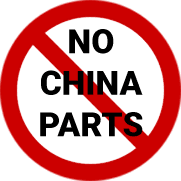The Fuel Injection System of an Aircraft Engine
While many individuals may be aware of aircraft internal combustion engines and their need for fuel to produce thrust, some may not know how the engine handles such an intensive procedure efficiently and safely during typical operations. Before fuel can be burned within the combustion chamber of a piston powered aircraft, it requires precise vaporization and mixture with oxygen in order to achieve sufficient results. This procedure is typically carried out by either a carburetor or fuel injection system, both of which ensure proper mixtures and distribution to accommodate varying needs and power settings. In this blog, we will discuss the fuel injection system and its functionality, allowing you to best understand how they benefit aircraft engines.
When an engine relies on fuel injection, fuel is often pressurized and provided directly to the combustion chamber. Continuous flow and direct injection systems both serve as the most common fuel injection types, and they each provide their own functionalities. With the continuous flow type, fuel injection is steady as fuel is provided to the inlet port of each individual cylinder. With the injection pump driven by the engine itself, excess fuel can be fed to the tank in order to keep positive pressure within the system. As fuel is delivered in a liquid form from the injection pump, it can then be vaporized before passing through a bypass check valve to start the engine. In order for the fuel injection system to maintain optimal fuel to air ratios throughout the duration of a flight, a fuel metering unit is used to filter and set values. Also attached to the fuel metering unit is the cockpit throttle, that of which regulates the butterfly which determines manifold air flow. Once fuel has been efficiently filtered and measured for ignition, manifold valves are used for proper distribution to each cylinder. Similar in appearance to a spider standing over the engine, each leg (tube) is attached to a cylinder through inlet ports for fuel transportation. Before finally being ignited, injector nozzles are used to spray fuel into the combustion chamber at the correct pressure, quantity, and ratio for proper combustion.
As compared to the continuous flow fuel injection system, the direct injection system features the same components and fairly similar operations. Their difference, however, lies in the fact that the direct injection system pressurizes and injects fuel straight to the combustion chamber, thus bypassing the need for an inlet valve. As a system that features two spark plugs and its specific design, such fuel injection systems are most often reserved for high power engines. If the aircraft utilizes super- or turbocharging elements, they may require modifications in order to properly take advantage of fuel injection.
With fuel injection, the mixing and distribution of fuel and air can be conducted with ease to ensure proper combustion and propulsion generation for an aircraft. Nevertheless, such systems are not without their various advantages and disadvantages that may dictate whether or not they are beneficial for a given aircraft. With fuel injection systems and their related components, a precise amount of fuel and air can be mixed for each cylinder depending on the current operating conditions of the engine. This ensures that all cylinders run at the correct temperatures needed for efficiency. Furthermore, the fuel injection system can provide a piston powered aircraft with improved fuel and air mixtures, smoother operations, easier starting of the engine, and more.
Due to the complexity of fuel injection systems, however, the fuel they handle must be clean and devoid of any contaimation. Vapor lock is also a concern for such systems, as a hot engine may have difficulty when starting. As compared to carburetors that conduct similar operations, fuel injection systems will often be more expensive. Despite this, the long term operation of a fuel injection system will offset their initial expense.
By achieving more fuel efficiency and smoother operations, fuel injection systems can save operators money in the long-run due to fuel savings and prolonged engine service lives. At ASAP Parts 360, we are your strategic sourcing partner for all the aerospace parts you need for your operational requirements. With our market expertise and purchasing power, we leverage competitive pricing and rapid lead-times for the benefit of our customers. Get started today and experience how ASAP Parts 360 can serve as your strategic sourcing partner for your needs.


